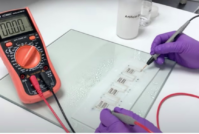look what we did!
Category: Innovation Bonds
Why You Should Consider a Polyurethane Tree This Year
If you’re on the hunt for the perfect low-maintenance Christmas tree this year, you may find yourself choosing from among several made with polyurethane.
Polyurethane is often a key component used in the manufacturing of artificial trees. It stands up to the rigors of the artificial tree production process, and PU’s versatility lends itself to use in almost every part of these faux wintertime spruces — from their hearty bases to the tiniest needles on the most delicate of boughs.
PU from Top to Bottom
The sturdy and lightweight properties of polyurethane make it a smart choice for the trunks of artificial trees — often tasked with holding up several pounds of branches. Additionally, in the form of pine needles, PU is prized for its ability to both hold color and be easily shaped, making it a choice material among high-end tree manufacturers.
Indoor/Outdoor & More
Polyurethane can even be found in artificial trees meant for outdoor use. PU trees keep their luster and will not fade or become distorted over time. That is because polyurethane can stand up to plunging temperatures and all manner of precipitation — including rain, snow and sleet.
In almost all holiday conditions and settings, artificial polyurethane trees are prized not just for their durability but their ability to pass as trees created by Mother Nature herself.
An Annual Debate
For as long as artificial trees have been around, one question has consistently been raised: which is more earth-friendly: artificial trees or real ones?
The answer may surprise you: it depends.
Four Real Trees for One Artificial
A real Christmas tree topping out between five and six feet can take more than a decade to grow. If you plan to keep your artificial tree for a period of four holiday seasons or more, the American Christmas Tree Association (ACTA), which represents tree manufacturers, says an artificial one will leave a smaller carbon footprint. The group claims that the energy and waste required to grow, harvest and dispose of four real Christmas trees is greater than that of a single artificial one.
The ACTA also found that the disposal of an artificial Christmas tree equates to about one one-thousandth of an individual’s carbon footprint for the year. One high-end manufacturer of artificial trees says a good tree can be used for several decades and that many are either donated or passed down from generation to generation. By his estimate, there are about 100 million artificial trees currently in circulation.
Artificial Tree? In Good Company!
Will you be trimming an artificial tree this year? If the answer is yes, you are not alone; the popularity of artificial trees is growing. According to a survey conducted by Nielsen, three-quarters of American households will put up a tree during the holiday season. Of those, an estimated 80 percent will use an artificial tree.

























